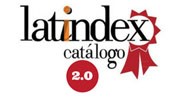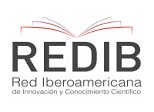Legal Regulations on Cybercrimes in Ecuador
DOI:
https://doi.org/10.69890/hallazgos21.v4i1.336Keywords:
Cybercrime; typing; penal procedure; types of computer crimes.Abstract
The technological advance and the increasing accessibility to the Internet that people have throughout the world has been useful for the massification in the creation and use of different websites and APP (applications). These are designed to meet the needs of its users through giving just one click; The needs are often varied, from complex international banking transactions to simply chatting with another person in a remote part of the world. Undoubtedly, the use of the Internet facilitates the lives of users, but those benefits become dangerous when malicious services infiltrate Internet services that can silently damage not only the technological equipment but also the finances of the people, companies and governments. Malicious programs are inserted into web sites or APP by computer criminals who have made Information and Communication Technologies (ICT) their new tool to commit their illicit acts. What are the types of crimes that are generated in the network, what laws exist to sanction cybercrime and what are the problems to combat it were the questions that motivated the development of this bibliographical review. At the conclusion of the work it was possible to determine that there are difficulties to combat computer crimes due to the transnationality of the same and the incompatibility of laws worldwide; Considering that in some countries there are no Laws to combat computer crimes and that the losses caused by this type of crime are millions.
References
BBC Mundo. (2017). Finanzas personales. Los 5 productos ilegales que más se venden en internet. Recuperado de http://www.finanzaspersonales.co/consumo-inteligente/articulo/cosas-ilegales-en-internet/60740
Consejo de Europa. (2001). Convenio Sobre La Ciberdelincuencia. Recuperado de https://www.oas.org/juridico/english/cyb_pry_convenio.pdf
De la Corte Ibáñez, L., & Blanco Navarro, J. M. (2014). Seguridad nacional, amenazas y respuestas. España: LID .
García, N. N. (2015). Cómo actuar si sufres calumnias e injurias en Internet. Recuperado de https://www.kaspersky.es/blog/como-actuar-si-sufres-calumnias-e-injurias-en-internet/6150/
Hernández Maldonado, K. (2016). Retos de la administración de juesticia penal frente a los delitos informáticos en el Ecuador. Recuperado de http://dspace.udla.edu.ec/bitstream/33000/6439/1/UDLA-EC-TAB-2016-71.pdf
Iglesis, C. F. (2018). La criminalidad en internet. Recuperado de http://abacus.universidadeuropea.es/bitstream/handle/11268/4954/Iglesias_Carballo_2001.pdf?sequence=1
Móises, B. A. (2017). Derecho Público e Internet: la actividad administrativa de regulación de la Red. Madrid: Colección Estudios y Documentos.
Moisés, B. A. (2018). Derecho público y propiedad intelectual: su protección en internet. Madrid: Editorial Reus.
Oficina de las Naciones Unidas contra la Droga y el Delito. (2013). El uso del internet con fines terroristas. Recuperado de https://www.unodc.org/...Internet.../Use_of_Internet_Ebook_SPANISH_for_web.pdf
Organización Mundial de la Propiedad Intelectual. (2018). La OMPI por dentro. Recuperado de http://www.wipo.int/about-wipo/es/
Oxman, N. (2013). Estafas Infromáticas a través de internet acerca de la imputación penal del "phishing" y el "pharming". Revista de derecho de la Pontificia Universidad Católica de Valparaíso, 262.
Rincón Rios, J., & Naranjo Duque, V. (2008). Delito Informático, Electrónico De Las Telecomunicaciones Y De Los Derechos De Autor. Cali: Grupo editorial Ibañez.
Ruiz Larrocha, E. (2017). Nuevas tendencias en los sistemas de información. Buenos Aires: Editorial Centro de Estudios Ramon Areces SA.
Sosa Meza, J. (2005). Aspectos generales y comparados de la Ley de Comercio Electrónico. Recuperado de https://www.derechoecuador.com/aspectos-generales-y-comparados-de-la-ley-de-comercio-electroacutenico
TECNOXPLORA. (2015). El 80% de lo que circula por la internet profunda es pornografía infantil. Recuperado de https://www.lasexta.com/tecnologia-tecnoxplora/internet/que-circula-internet-profunda-pornografia-infantil_2015011257f78f110cf2fd8cc6aa9ddf.html
Téllez Valdés, J. (2008). Derecho informático. México: MC Graw Hill.
Ureta Arreaga, L. A. (2009). Retos a superar en la administración de justicia ante los delitos informáticos en el Ecuador.(Tesis de grado). Escuela Superior Politécnica del Litoral. Guayaquil. Recuperado de https://www.dspace.espol.edu.ec/bitstream/123456789/5792/5/TESIS%20-%20delitos%20informaticos%20en%20ecuador%20y%20administracion%20de%20justicia.pdf
Zambrano Mendieta, J. E., Dueñas Zambrano, K. I., & Macías Ordoñez, L. M. (2016). Delito Informático. Procedimiento Penal en Ecuador. Dominio de las ciencias, 204-215. Recuperado de https://dialnet.unirioja.es/descarga/articulo/5761561.pdf
Downloads
Published
How to Cite
Issue
Section
License
Los artículos enviados a la Revista Científica Hallazgos21 deberán ser totalmente originales e inéditos.
Los autores son los responsables de los textos y las imágenes incluidas en los artículos y no necesariamente reflejan el pensamiento de la editorial o de la Pontificia Universidad Católica del Ecuador, Sede Esmeraldas (PUCESE).
Los autores disponen cederle a la Revista Científica Hallazgos21 todos los derechos inherentes para la edición, publicación y distribución o divulgación del mismo.
Se autoriza a las revistas firmantes de los acuerdos de Encuentros de Revistas Latinoamericanas para reproducir en parte o totalmente los artículos con la sola mención de la fuente claramente señalada.







